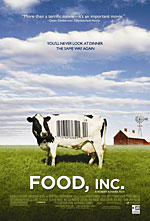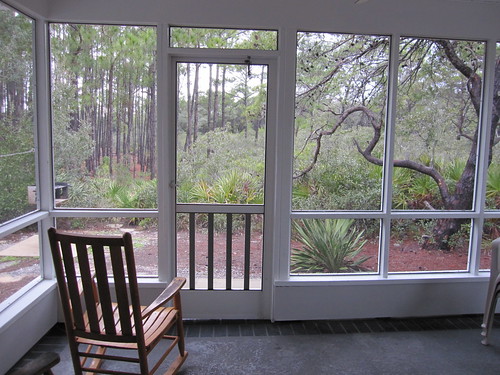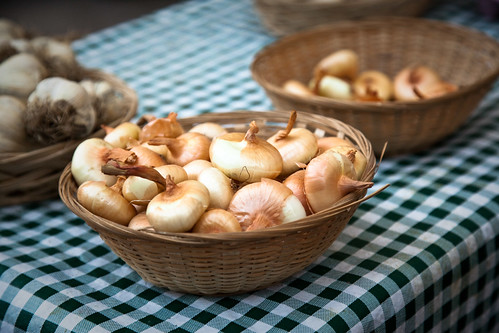Archive for January, 2010
Come on in and have a seat
So we’ve been writing about suburban homesteading for some time now, almost a year actually. And since this site started we’ve met a lot of great people along the way.
People from all over the world take part in all the little triumphs (and troubles) of homesteading. We want you to know we really understand what you all are trying to achieve and hope that in some way we’ve been helpful. To say something on our little electronic soapbox and have people (hundreds a month) read it from the ether is a good feeling. Readers are what turn blogs into communities and not an exercise in self-aggrandizement. Thank you. We think you’re all neat.
So, now we want to ask you a favor. If you read this blog regularly, please respond to this post with a comment about yourself. Tell us where you’re from, what you do, what’s on your homestead, or what your favorite book is. Let us know if homesteading is a future dream of yours or a current reality? What would you like us to write more about? Is there anything we can explain better? The more we know about the people reading the blog, the better we can write stuff you’ll be interested in taking time out of your busy lives to read. (and honestly, there’s so much stuff rolling around our collective heads that it’s hard to think of topics, sometimes.)
But, beyond comments and criticisms, we’d just really like getting to know you. So please come on in, grab a sit, and say hello.
Six Reasons – Holding You Back from Homesteading

1. Overconfidence – The assumption that a crisis or disaster will never hit your neck of the woods. The idea that if disaster does strike, city, county and state government agencies will swoop in put everything back to normal.
Overconfident in your judgment and abilities, that they are greater than your actual skill level or knowledge. Never assume you know everything or even enough. We can always learn and expand our knowledge base. I learn new things and contemplate fresh ideas all the time, the guy or gal thinking they know all there is to know will likely be the first one in trouble.
Be open to useful information or insights from the unlikeliest of places or people. Small tidbits can garner useful information.
2. Procrastination – Putting things off to the last possible minute; giving more importance to other tasks, chores, and parts of your life than how to take care of your family. Procrastinating can get you killed. In a true economic or societal collapse you may not have time to run to the corner grocery to stock up. And, if you do have the time there may not be anything to buy once you get there.
Everyone, who didn’t plan ahead, will be doing the same thing – running to the nearest store. The lines will be long; the trip can be dangerous as people vie for the same products. It is a situation that is best avoided. It’s better to get off your butt now, stock what you need and get it done. A lot of people fear stocking up and being prepared because they think they will never use what they bought, eventually there stocks go bad and they waste money.
This is nonsense. You will always need to eat, so the solution is simple – eat what you store and replace what you’ve eaten. First in – first out. Repeat. This way you never spend more money than you normally would. All you’re doing is buying what you already need, just in advance of the need.
3. Inefficient use of resources -Wasting money (resources) on things of lesser importance, while neglecting the stuff needed for your homestead to survive and thrive. Concentrate your efforts on food supplies, garden supplies, livestock supplies and the ability to filter drinking water and collect water for outside watering.
It’s important to protect what you have, but eating and drinking are more important to your family’s long-term survival and comfort. Sure we need to protect what we’ve put away, just don’t neglect the other stuff.
4. Failure to act – This one ties in with procrastination and indecision and many of us suffer from it. Not only will it interfere with your homestead plans it can stop you from planning at all.
Look at your situation, form a plan (write it down), break it down into manageable projects and do it. No excuses.
Anything worth doing well is worth doing badly in the beginning. We all started from scratch. None of us started knowing it all. The difference is we started, learned from our mistakes, asked questions, and moved forward one step at a time.
5. Lack of persistence – Most people start their homestead with the utmost determination and desire to get things done – but they stop when they run into the first obstacle. They lack persistence.
Most things aren’t easy, if you give up before completing your goal, you will never get anything done. Quitters never succeed. Set realistic goals (write them down), break them down into phases and work through it until each goal is completed.
The key word is realistic, never set goals that are impossible to reach. Most of us can’t afford the country retreat, herd of cattle, flock of sheep, or acres of fruit trees . We don’t have the time, between jobs and family responsibilities to tend acres of vegetable gardens. Thinking this is what you need to homestead will only discourage you before you even start. Set realistic goals, not pie in the sky dreams. Write it down and work at it until it is a reality.
6. Divided actions – Many homesteaders run around like the chicken with its head cut off. Their actions are divided, fragmented, disorganized to the point where they never get anything done.
A raised bed here, a few bags of beans there, maybe work on a chicken coop or rabbit hutch – but they never meet their goals, never get anything done. You know who I’m talking about…
Take a look at your personal situation and decide, what is the most important consideration for your homestead to begin and survive? Again make a list. List the most important to the most trivial. Work down the list in descending order until your goals are completed.
What’s been holding you back from starting your suburban homestead? What advice do you have for others who are considering the leap? Let us know what helped you or what you think will help others.
![]() photo credit: Inside Disaster
photo credit: Inside Disaster
Old Wive’s Tale or Just Plain Wise?
I recently found this article in one of my favorite magazines – MaryJanesFarm. The simplicity of the message was so fascinating (and relevant for this time of year) that I had to share with all of you.
Fact or folklore?
When the 1918 flu pandemic killed 50-100 million people between 1918-1920, there was said to be a doctor who visited many farmers to see if he could help them combat the flu. The doctor came upon one household where everyone was very healthy. When the doctor asked what the family was doing that was different, the wife replied that she had placed a dish of unpeeled onions in each room of the house. The doctor asked if he could have one of the onions to observe under a microscope. When he did, he found traces of the flu virus in the onion. It had absorbed the infection, keeping the family healthy.
I heard this story from my hairdresser in Arizona. She said that after hearing it, she placed onions around her shop during flu season. To her surprise, none of her staff got sick that year. Another friend reported, “I developed pneumonia after a bad cold and, needless to say, I was very ill…I came across an article that said cut both ends off an onion and place it in an empty jar next to the sick patient at night. It said the onion would turn darker in color by morning from the germs. Sure enough, it happened just like that…and I began to feel better.”
MaryJane reports that during bouts with colds and flu, her grandma would have her eat a slice of onion sprinkled with salt to chase away the germs.
The moral of the story? Buy some onions and place them in bowls around your home. If you work at a desk, place one or two in your office. We did it last year, and no one in our family got the flu. If this helps you and your loved ones from getting sick, all the better. What have you got to lose?
I think I’m going to add extra onions to my shopping list. How ‘bout you?
![]() photo credit: sebastien.b
photo credit: sebastien.b
Church Grows More Than Faith
… One foggy Maryland morning last spring, I was among more than 400 people who donned jeans and boots, packed shovels and hoes, and headed to…church. After months of hoarding leaves from suburban yards and gathering manure from local farmers, parishioners at Cedar Ridge Community Church in Spencerville were ready to spend a Sunday transforming hard clay into dark, rich humus.
Creating a farm might seem an unlikely mission for a congregation of urban dwellers and suburbanites. For Cedar Ridge, the idea had grown out of a year of prayerful reflection about how to use our 63 acres in a way that would cherish the earth and its inhabitants. We also hoped that working the soil and giving organic food to our neighbors in need would help us to grow spiritually.
Click Here to read how a small Maryland congregation came together to build a church garden; cherishing the earth and feeding a community in need.
10 Ways to Keep You and Your Family Warm This Winter
For much of the country, we are experiencing the worst winter in more than 20 years. With temperatures plunging and heating bills increasing how do we make it through without emptying the bank?
First, we can decide to make adjustments to our normal energy hungry lifestyle. We can opt to turn down the thermostat, use less, oil, electric and gas heat. We can switch to wood heat where possible. We can embrace other ways to keep warm besides cranking up the heat.
It can be done!
1. Wear layers of clothing. Your body creates heat and wearing layers contains this free source of heat. Did you know polyester underwear and long underwear is considered by survivalists to be the superior fabric of choice for undies? The reason is it wicks away moisture. Both cotton and wool hold moisture in which can lead to hypothermia.
Polar fleece is a great source for polyester clothing. Choose a variety of polar fleece articles like hats, gloves, mittens, scarves, vests, jackets, pants, pullovers, socks and bathrobes. If you are really cold, wear a warm hat as most heat escapes from your head and the brain gets the cold message immediately.
2. Throws and lap blankets. Have a variety of blankets and throws available on sofas and chairs. If you feel chilled pull one on and snuggle up with that special someone or a beloved pet. My Springer Spaniel is a great foot warmer. Have a variety of blanket weights for different temperatures – wool, down, cotton and polar fleece throws and again polar fleece wins the contest for being the warmest.
3. Cover furniture with polar fleece. (Sounds like I am doing a commercial for polar fleece but I am not) Covering furniture with polar fleece is often used to keep it clean from pets, but the result is a very warm seat. Select high quality polar fleece for maximum warmth and wear ability.
4. Socks and Slippers. I am huge fan of socks and hate to have cold feet. There is a difference in the warmth of my body when I wear socks so I always have a pair on in the winter months. Coupled with a great pair of warm slippers that come above the ankle you will not feel drafts that creep around the floor. Since hot air rises, feet are subject to this cold air.
5. Down Comforters. For years I would not even consider a down comforter for my bed. Since most birds fly south for the winter why would down be warm? Silly me. Years ago when I traveled to New England I had the opportunity to sleep under a down comforter. This “blanket” was very toasty and held in my own body heat. I was hooked. When I got home I searched for a similar comforter and bought one for every bed. We still use them today – in warm weather and cold.
6. Use Door Draft Stoppers. Door draft stoppers or guards are filled tubes that keep cold air from creeping under doors. They can be purchased new or made easily by filling a tube sock or tube of fabric with rice, beans, sand or stuffing. They look a bit like a snake and really do the trick. If you have a dog like mine that likes to pull the innards out of stuffed animals don’t make yours with stuffing!
7. Close Doors. Keep the doors closed to rooms that do not need to be heated. Just heat the areas that you sit in during the day.
8. Do leave the Bathroom Door Open. Showers and baths create lots of heat but more importantly humidity. In the winter the house dries out and the moisture from the bathroom can help tremendously. Now I understand in some family’s privacy is important. Just leave the door open after showering and don’t use the fan.
9. Do Leave the Oven Door Open. Leave the oven door open after cooking and turning off the oven. Let that heat escape to warm the kitchen.
10. Do Open the Dishwasher. When Washing Cycle is Finished. Once the dishes are washed open the door and let the dishes air dry. This will let the heat escape, allow the moisture to escape to humidify the house and save a bundle on electricity over a period of time.
Hopefully one or more of these suggestions will help you stay snuggie warm in the cold months. If all else fails go to the animal shelter and get a dog, they love to snuggle under blankets and curl up and sit in your lap. They are great substitutes for the old fashioned hot water bottles. Your other alternative is to go to bed early with a good book and under that down comforter.
![]() photo credit: MissTessmacher
photo credit: MissTessmacher
From Field to Fork

I finally had enough down time this past weekend to watch a movie I’ve been wanting to see for quite some time – Food, Inc. As an Ag Business major in college who has worked for some of the countries largest agricultural companies, who was married to a production farmer for 15 years, and who has since turned agrarian homesteader I was impressed with the information given in the movie.
It was also sad to see how far we (farmers) have fallen. Saddened because this is an industry that I fell in love with almost 30 years ago, grew up with really, and have since separated from because I can no longer identify with or condon many of its practices.
It was just past my 9th birthday when I spent the summer at a cousins farm in a small town in the middle of Missouri. Joe had a few hundred acres and raised cattle and hogs, corn, wheat and alfalfa. Each morning I would go with him to “take care” of the animals. My job was to sit in the back of a flatbed truck and throw flakes of hay over the sides for the cattle. This was no feedlot operation, but cows on pasture with hay as a supplement. When we finished we would pick up a load of feed and fill big hoppers in the pig pens. Even though the pigs were not on pasture or rummaging around wooded areas they were out in the sun with plenty of mud holes to wallow in.
When the time was right we cut and baled alfalfa. Because I was not big enough to stack hay on the trailers I got to sit on the tractors wheel covering and watch the whole thing like a bird high up in its nest. The view was great. I loved being outside, the smell of fresh cut hay, picking corn off the stalks to take home for dinner. Even when the occasional animal died, a fact of reality on a farm, I was not put off by the experience. Not even a little.
Every few days we would stop by the farm next door, a dairy, full of black and white cows munching on cool green pastures. We’d stop just after the afternoon milking was finished, I’d take our stainless steel milk pail to the cooling room and out of the biggest tank I’d ever seen I would pour us a gallon of milk. Fresh and ice cold, milked from the cows just moments before, I had never tasted anything like it. I couldn’t drink the milk right then, we had to wait for the cream to separate so it could be skimmed off and made into butter. This was the full on, unadulterated, unpastuerized real stuff – smooth and creamy.
Once a month Joe and I would go to the sale yard to sell hogs or cattle that were ready for market. When we weren’t at the yards we were taking grain to the mills or visiting other local farmers either on their farms or at their local gathering places, small cafes or coffee shops where locals would meet to talk shop, farm subsides, politics and the like. It was here, between the summer chores and the small town talk, that I fell for this world of farming. I loved the people, the places, the smells, the work. You name it I was hooked.
At night, Joe and I, would listen to farm radio programs for weather updates, market prices, harvesting info and news. Even at nine I was beginning to understand that there was more to getting food to my table in California than just stopping by the store, there were people I’d would never see, places I’d never visit, trucks and trains involved in the whole process that I didn’t know anything about. But, on that farm in the hot humid mid-west summer I knew I wanted to know, wanted to learn, wanted to be one of them. I wanted to be a farmer!




Recent comments
Aenean nonummy hendrerit mauris. Phasellus porta.